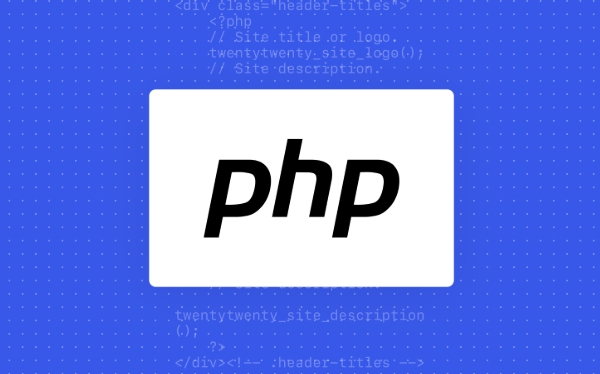There are four main reasons and solutions for header jump failure: 1. There is already an output before calling header, and you need to check the spaces before the php tag, the blanks in the output statement or file and use ob_start() to buffer; 2. The script does not add exit or die after header, causing the script to continue to be executed, and the program should be terminated immediately after jump; 3. The browser cache or plug-in interferes, and can be verified by clearing cache, incognito mode or tool testing; 4. https configuration or domain name problems, you need to ensure that the jump address is correct, the ssl certificate is valid, and the server configuration is correct. During debugging, output, script termination and external factors should be checked in turn.

Sometimes I want to jump with PHP header('Location: ...') , but the page does not respond or an error occurs. This situation is quite common, and the problem may lie at several key points.

The header can only be called before outputting the content
header() function must be called before any actual output, including HTML, spaces, line breaks, etc. Once content output is output, PHP will no longer be able to send HTTP header information, and the jump will not take effect at this time.
Common Situations:

- There are spaces or line breaks before PHP tag
<?php - Used output statements such as
echo,printorvar_dump - There are blank characters in the included file
Suggested practices:
- Check whether there is any advance output. You can open
error_reporting(E_ALL)to view warning information. - If you use templates or view files, make sure that you do not output content in advance
- Use
ob_start()to enable output buffering, which can delay output content
After the header is called, exit or die should be added
Even if you call header('Location: xxx') , PHP will not automatically stop script execution. In other words, the subsequent code will continue to run, which may lead to unexpected results.

Example of correct writing:
header('Location: https://example.com'); exit;
This ensures that the program terminates immediately after the jump, avoiding unnecessary content output or logical execution.
Browser cache or plug-in interference
Sometimes the browser caches the request result, especially the 301 jump will be cached for a long time. If you have tested a failed jump, even if the code is fixed, you may not see any effect.
Solution:
- Clear browser cache, especially redirect related
- Test with invisible mode or traceless window
- Use Postman or curl tools to verify that the jump is normal
In addition, some browser plug-ins (such as ad blocking, privacy protection) will also affect page jump behavior. You can try to disable the plug-in before testing.
HTTPS and domain name settings issues
If the target address is HTTPS, but the server configuration is incorrect, or there is a problem with the domain name resolution, it may also cause the jump to fail. For example:
- SSL certificate error
- .htaccess Settings Conflict
- Relative paths instead of full URLs were used
Recommended inspection:
- Ensure that the jump address is formatted correctly, it is recommended to use a complete URL, such as
https://example.com/login - If it is a local development environment, please pay attention to whether the virtual host configuration supports HTTPS
Basically these are the prone places where problems arise. Either the grammar is wrong or the details are not paid attention to. When debugging, you should first confirm whether there is output, then check whether the script is terminated, and finally check for external factors.
The above is the detailed content of PHP header location doesn't redirect. For more information, please follow other related articles on the PHP Chinese website!

Hot AI Tools

Undress AI Tool
Undress images for free

Undresser.AI Undress
AI-powered app for creating realistic nude photos

AI Clothes Remover
Online AI tool for removing clothes from photos.

Clothoff.io
AI clothes remover

Video Face Swap
Swap faces in any video effortlessly with our completely free AI face swap tool!

Hot Article

Hot Tools

Notepad++7.3.1
Easy-to-use and free code editor

SublimeText3 Chinese version
Chinese version, very easy to use

Zend Studio 13.0.1
Powerful PHP integrated development environment

Dreamweaver CS6
Visual web development tools

SublimeText3 Mac version
God-level code editing software (SublimeText3)
 PHP Variable Scope Explained
Jul 17, 2025 am 04:16 AM
PHP Variable Scope Explained
Jul 17, 2025 am 04:16 AM
Common problems and solutions for PHP variable scope include: 1. The global variable cannot be accessed within the function, and it needs to be passed in using the global keyword or parameter; 2. The static variable is declared with static, and it is only initialized once and the value is maintained between multiple calls; 3. Hyperglobal variables such as $_GET and $_POST can be used directly in any scope, but you need to pay attention to safe filtering; 4. Anonymous functions need to introduce parent scope variables through the use keyword, and when modifying external variables, you need to pass a reference. Mastering these rules can help avoid errors and improve code stability.
 How to handle File Uploads securely in PHP?
Jul 08, 2025 am 02:37 AM
How to handle File Uploads securely in PHP?
Jul 08, 2025 am 02:37 AM
To safely handle PHP file uploads, you need to verify the source and type, control the file name and path, set server restrictions, and process media files twice. 1. Verify the upload source to prevent CSRF through token and detect the real MIME type through finfo_file using whitelist control; 2. Rename the file to a random string and determine the extension to store it in a non-Web directory according to the detection type; 3. PHP configuration limits the upload size and temporary directory Nginx/Apache prohibits access to the upload directory; 4. The GD library resaves the pictures to clear potential malicious data.
 Commenting Out Code in PHP
Jul 18, 2025 am 04:57 AM
Commenting Out Code in PHP
Jul 18, 2025 am 04:57 AM
There are three common methods for PHP comment code: 1. Use // or # to block one line of code, and it is recommended to use //; 2. Use /.../ to wrap code blocks with multiple lines, which cannot be nested but can be crossed; 3. Combination skills comments such as using /if(){}/ to control logic blocks, or to improve efficiency with editor shortcut keys, you should pay attention to closing symbols and avoid nesting when using them.
 How Do Generators Work in PHP?
Jul 11, 2025 am 03:12 AM
How Do Generators Work in PHP?
Jul 11, 2025 am 03:12 AM
AgeneratorinPHPisamemory-efficientwaytoiterateoverlargedatasetsbyyieldingvaluesoneatatimeinsteadofreturningthemallatonce.1.Generatorsusetheyieldkeywordtoproducevaluesondemand,reducingmemoryusage.2.Theyareusefulforhandlingbigloops,readinglargefiles,or
 Tips for Writing PHP Comments
Jul 18, 2025 am 04:51 AM
Tips for Writing PHP Comments
Jul 18, 2025 am 04:51 AM
The key to writing PHP comments is to clarify the purpose and specifications. Comments should explain "why" rather than "what was done", avoiding redundancy or too simplicity. 1. Use a unified format, such as docblock (/*/) for class and method descriptions to improve readability and tool compatibility; 2. Emphasize the reasons behind the logic, such as why JS jumps need to be output manually; 3. Add an overview description before complex code, describe the process in steps, and help understand the overall idea; 4. Use TODO and FIXME rationally to mark to-do items and problems to facilitate subsequent tracking and collaboration. Good annotations can reduce communication costs and improve code maintenance efficiency.
 Learning PHP: A Beginner's Guide
Jul 18, 2025 am 04:54 AM
Learning PHP: A Beginner's Guide
Jul 18, 2025 am 04:54 AM
TolearnPHPeffectively,startbysettingupalocalserverenvironmentusingtoolslikeXAMPPandacodeeditorlikeVSCode.1)InstallXAMPPforApache,MySQL,andPHP.2)Useacodeeditorforsyntaxsupport.3)TestyoursetupwithasimplePHPfile.Next,learnPHPbasicsincludingvariables,ech
 How to access a character in a string by index in PHP
Jul 12, 2025 am 03:15 AM
How to access a character in a string by index in PHP
Jul 12, 2025 am 03:15 AM
In PHP, you can use square brackets or curly braces to obtain string specific index characters, but square brackets are recommended; the index starts from 0, and the access outside the range returns a null value and cannot be assigned a value; mb_substr is required to handle multi-byte characters. For example: $str="hello";echo$str[0]; output h; and Chinese characters such as mb_substr($str,1,1) need to obtain the correct result; in actual applications, the length of the string should be checked before looping, dynamic strings need to be verified for validity, and multilingual projects recommend using multi-byte security functions uniformly.
 Quick PHP Installation Tutorial
Jul 18, 2025 am 04:52 AM
Quick PHP Installation Tutorial
Jul 18, 2025 am 04:52 AM
ToinstallPHPquickly,useXAMPPonWindowsorHomebrewonmacOS.1.OnWindows,downloadandinstallXAMPP,selectcomponents,startApache,andplacefilesinhtdocs.2.Alternatively,manuallyinstallPHPfromphp.netandsetupaserverlikeApache.3.OnmacOS,installHomebrew,thenrun'bre






